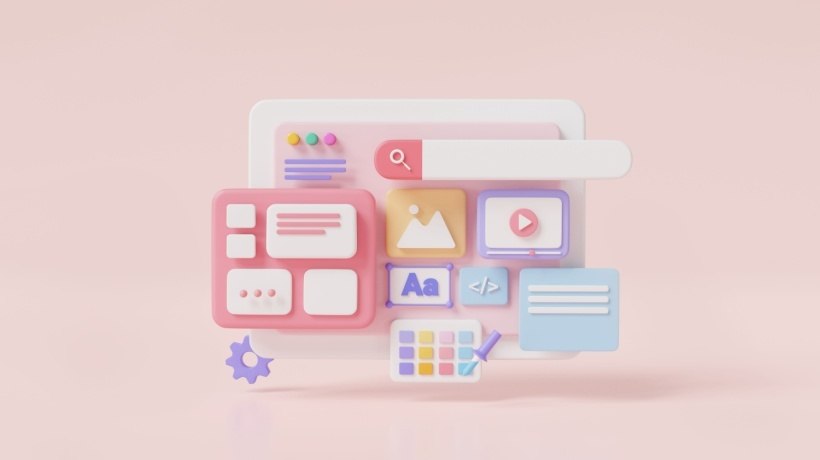Create An eLearning App Of Great Value
By 2022, the global online learning market is expected to reach $275.10 billion in monetary worth, Reuters says [1].
From 2001 to 2017, the corporate online education industry has grown by 900%, and at least 42% of organizations that employed learning apps have greatly boosted their profitability, according to the statistics by eLearning Industry.
eLearning is more sustainable than face-to-face learning in terms of the environment. A study by The Open University found that “distance learning courses involve 87% less energy and 85% lower CO2 emissions than the full-time campus-based courses” [2].
No doubts, online learning is the future.
However, if you are already reading this article, I assume that you understand the benefits that the online learning industry provides. So let’s move straight to the “how to make an eLearning app” section.
Choose Your Niche
The education industry provides plenty of options for learning apps to develop.
You might want to create a customized education system, targeted at a certain group of people. Let’s say, you want to develop an application for primary school students to learn to read and write. Maybe, you want to let beginner athletes pick the right eLearning platform to find out more about nutrition and exercising. You may create an eLearning software product, which would feature a variety of courses in multiple subjects of various difficulty level and duration. It is also a great idea to develop an AI chatbot, which would help your users learn languages or solve math problems.
A gamified education service would let you encourage a young audience to study while playing, whereas more mature users would enjoy full-scale self-Learning Management Systems. Educators would be grateful if you developed a skills assessment solution or a school management platform.
Meanwhile, businesses would greatly benefit from a professional training system. So, have you decided what should it be? An app for learning foreign languages? A self-learning platform? Or maybe, a digital literature database? The opportunities are endless, and all of them may become really helpful for someone on a condition that you take the needs of your target user into account.
Develop The Idea
Place your future app in the 7 product dimensions: multiplicity, publicity, geography, identity, communication, time, and price.
You need to start with understanding what your product should be. Should it be an individual software product or one of the tools of a broader educational system? For instance, if you develop Learning Management Systems for a broader online learning platform, you will be limited by the standards and requirements of the latter. However, if you develop a gamified application for children to learn math, you are free to do whatever you want.
Now, you will have to decide if your app is going to be open only to a certain circle of people or to the broad public. Let’s say, if you develop an app for learning languages, you would want to make it generally accessible. However, if you develop an internal education management platform for a particular school, you would definitely want to close it from the public.
Respectively, another important choice to make is whether your target audience is going to be global or limited to some geographical place. If your app is going to be available only for certain users, you should customize it in accordance with a particular geographical location. For instance, if you develop a performance assessment platform for the USA, the marks should range from “A” to “F”, for Germany—from “1” to “6”, for the Netherlands—from “10” to “1”.
Going even further, you might want to consider whether to customize your app to a particular user or not. For example, if your product is targetted at athletes, you should provide them with information that they find relevant. However, if it is a platform with online courses in all possible subjects and topics, you should leave your app as neutral as possible.
Moving on, as far as communication is concerned, you need to decide if the information flow will be unidirectional or bidirectional. If your online-learning app is limited to lectures, the communication is going to be one-way. If you are going to provide your users with an opportunity to pass tests, answer questions, or chat with each other, the information flow will be two-way.
You need to decide whether the users of your app will interact with it synchronously or asynchronously. For instance, if your app features a chat room or an online conferencing tool, your users will interact in real time. If your app features a discussion forum or any other form of communication that does not require an immediate response, you will foster asynchronous interaction. The first option helps students learn to communicate more effectively and to think faster, whereas the second one gives them an opportunity to take time to formulate their thoughts.
The last but not the least important question to answer is whether your app should be free or paid, or maybe it should feature in-app purchases. Depending on your purpose and target audience, you need to decide if monetization is possible. For example, if you develop an online dictionary, you could make it accessible for free but add some premium features that can be purchased. If you develop a translator, there is no point in making it paid because of a huge number of competitors that are accessible for free. Instead, you can profit from advertising. However, if your learning app is going to feature some exclusive courses or resources, you better charge your users for using it.
Find Your Team
Depending on what your product should be, what your time and budget limits for developing an educational app are, what special features need to be implemented, you need to choose a team of specialists that will assist you with the app development.
In particular, if you want to implement AR/VR, you need to find professionals that specialize in AR/VR. If your app is going to use the advancements of machine learning and AI, you need to hire people that are skillful in these spheres. Another important question to consider is whether to hire freelancers or an agency. While the former option is more cost-efficient, the latter option is more reliable.
At this point in time, you also need to discuss the payment strategy. Are you willing to sign a Statement of Work, or you want to work by a “Time and Material” approach? In the first case, you will know a fixed price in advance, so you can plan your budget expenditures. In the latter case, you will have an opportunity to spend more time and costs on perfecting the application or adding some additional features.
Conduct A Discovery Stage
After you have decided what your app should look like and whom you are going to work with, conduct profound research to evaluate the existing software and eLearning resources and better understand your user needs.
By doing so, you will be able to reassess your idea before starting the development. You will understand, whether the niche is vacant or overcrowded, whether there are some other features you would want to implement, what makes a successful education app in your particular sphere, or which mistakes to avoid. It is important that the discovery stage is conducted after you have hired your team because a professional business analyst would see some opportunities or potential issues that you could, otherwise, easily miss.
More than that, you should be prepared that your initial product idea is barely likely to stay intact. After the discovery stage, you might need to reevaluate your target audience, communication model, or pricing strategy. It is a natural process aimed to improve the final outcome, so if you trust your development partners, do not resist changes that they offer.
At this point, you also need to decide which platforms you want your app to operate on; is it a web, desktop, or mobile platform? Accordingly, your partners will help you to choose the technical stack, which would allow them to develop the best-functioning application.
Hand In Your Idea To The Developers
Once you have formulated the final idea, it is time to hand it into your team of professionals, who will design, develop, deploy and support your app.
The first step, although not an obligatory one, would be to create a prototype, and then, a minimum viable product to ensure that your idea is going to work. After the UI/UX requirements and technical specifications are finalized, the development starts. Throughout the development process, your app should be continuously tested by QA specialists to ensure that there are no bugs. Only after the application is perfect, it can be deployed to the store. Maintenance and support are equally important since you may come up with new ideas, your users may express their will to see some additional features, technologies may require some updates or some unpredictable mistakes may occur.
Promote And Advertise
However great your software product was, it is not going to work if your target users do not know about it.
You may create an account on Instagram or Facebook to reach your target audience and communicate with them. With the help of paid advertising and word-of-mouth, you will be able to spread awareness about your product. Keep in mind that the better your product is, the less you are going to spend on marketing since the users will do all the promotion job for you. Social media platforms will also come in handy in terms of collecting learner feedback and adapting your app to the best interest of your users. Besides, you may also contact your target users directly and offer them to test your software for free. For example, if you have developed a plagiarism checker, you can contact major schools and universities and offer them a trial period of your program. Finally, good old marketing strategies, such as TV advertisement, billboards, or handouts are also going to serve their purpose even though they are bound to cost you a lot more than any other marketing solution.
To Wrap Up
- Come up with a unique idea: find a software solution to a learning problem.
- Define your app in terms of multiplicity, publicity, geography, identity, communication, time, and price.
- Hire a team of professionals whom you would trust with developing an educational app.
- Conduct a comprehensive discovery stage and finalize your product specifications.
- Think about how to adopt the latest technologies, such as machine learning and AI, voice chatbots, AR/VR, or PWA. Also, consider gamifying your app if applicable.
- Design, develop, test, and deploy.
- Do not forget about promoting and advertising your product.
References:
[1] Global E-Learning Market 2017 to Boom $275.10 Billion Value by 2022 at a CAGR of 7.5% – Orbis Research
[2] Open Research Online (http://oro.open.ac.uk/10677/1/paper5.RoyPotter%26Yarrow_IJSHEPaperJuly07.pdf)









